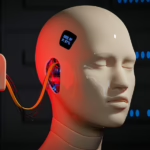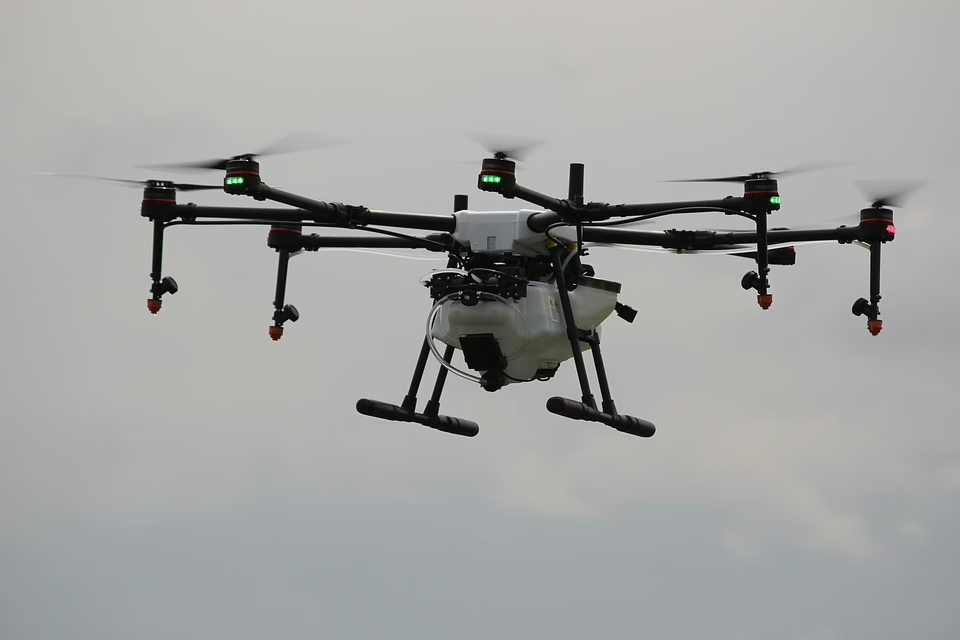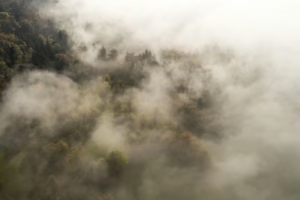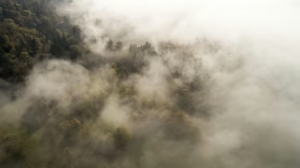Using Drones for Wildlife Conservation: A New Approach to Protecting Nature
Introduction
In recent years, drones have emerged as revolutionary tools in various fields, from agriculture to photography. However, their applications extend far beyond these domains; one of the most promising uses of drone technology lies in wildlife conservation. This article explores how drones are transforming conservation efforts, aiding researchers and wildlife managers while offering innovative solutions to longstanding challenges in protecting endangered species and preserving biodiversity.
The Need for Innovative Solutions in Wildlife Conservation
The global biodiversity crisis is profound and alarming. Habitat destruction, climate change, poaching, and invasive species are just a few of the factors putting immense pressure on wildlife populations around the world. With many species facing extinction at an unprecedented rate, there is a pressing need for effective and innovative approaches to conservation.
Traditional conservation methods, which often rely on human observation and resource-intensive fieldwork, face significant limitations. These challenges include the vastness of protected areas, difficult terrain, and the potential danger to human researchers in remote or conflict-prone locations. Consequently, there is an urgent need for novel technologies that can enhance conservationist efforts and provide more effective monitoring and management strategies.
The Rise of Drone Technology
Drones, or unmanned aerial vehicles (UAVs), have seen exponential growth in both capability and accessibility over the past decade. Originally developed for military applications, drones are now widely available and affordable, enabling a range of uses, including aerial photography, surveying, and even delivery services.
In wildlife conservation, drones offer several advantages:
-
Cost-Effectiveness: Drones can cover vast areas at a fraction of the cost of traditional wildlife surveys using helicopters or fixed-wing aircraft.
-
Data Collection: UAVs can be equipped with high-resolution cameras and thermal imaging sensors to collect data that would be challenging or impossible to obtain on foot.
-
Real-Time Monitoring: Drones can provide immediate feedback, allowing conservationists to make timely decisions.
-
Safety: Drones can operate in hazardous conditions without endangering human life.
-
Access to Remote Areas: Drones can reach areas difficult for humans to access, such as rugged mountains or dense forests, making them invaluable for monitoring wildlife in these regions.
Applications of Drones in Wildlife Conservation
1. Species Monitoring
One of the primary applications of drones in wildlife conservation is species monitoring. Traditional methods of tracking animal populations often involve extensive fieldwork, which can be time-consuming and resource-heavy.
Case Study: African Elephants
In Africa, drones have been successfully deployed for monitoring elephant populations. These drones can cover vast expanses of savanna to detect and track herds, allowing researchers to gather data on population dynamics and movements. As a result, conservationists can implement targeted intervention strategies to prevent poaching and ensure the survival of these majestic creatures.
2. Habitat Mapping and Assessment
Drones can be equipped with various sensors to capture high-resolution images and data on ecosystems, contributing to improved habitat mapping and assessment.
Case Study: Coral Reefs
In marine environments, drones equipped with underwater cameras can monitor coral reefs’ health and biodiversity. By assessing the condition of these vital ecosystems, researchers can identify areas in decline and direct conservation efforts accordingly.
3. Anti-Poaching Efforts
Drones are increasingly being used in anti-poaching efforts, providing a surveillance tool that is both effective and non-intrusive.
Case Study: Madagascar
In Madagascar, drones have played a critical role in protecting endangered lemur species from poaching. Equipped with thermal imaging technology, drones can identify potential poaching activities during nighttime, allowing rangers to be deployed swiftly to intervene.
4. Research and Data Collection
Drones have revolutionized data collection methodologies, facilitating research in various ecological domains.
Case Study: Bird Population Studies
Research on bird populations can greatly benefit from drone technology. Drones can capture images that assist in identifying bird species and their nesting sites, providing valuable insights for avian conservation efforts. This method reduces the disturbance often caused by human observers while enabling extensive data collection over large areas.
5. Reforestation and Habitat Restoration
Drones are also being utilized in reforestation projects, where they can plant seeds over large areas, improving landscape recovery efforts.
Case Study: DroneSeed
DroneSeed, a Pacific Northwest company, has developed a method to deploy seed pods over deforested areas using drones. This innovative approach not only speeds up the reforestation process but also reduces operational costs, making recovery efforts more efficient.
Challenges and Limitations of Drone Use in Conservation
While the use of drones in wildlife conservation offers many advantages, several challenges and limitations remain.
1. Regulatory Issues
The use of drones is subject to strict regulations around the world, which can hinder their implementation in conservation efforts. For instance, obtaining permits can be time-consuming and complicated, especially in sensitive areas like national parks.
2. Technical Challenges
Drones require skilled operators and may face technical issues, such as battery life, range limitations, and sensitivity to environmental conditions. These technical challenges can impact their reliability in the field.
3. Ethical Considerations
The introduction of drones into wildlife habitats raises ethical questions regarding their impact on wildlife behavior and ecosystems. Care must be taken in their deployment to minimize stress on the animals being monitored.
4. Data Management
The vast amounts of data collected by drones necessitate robust data management and analytics capabilities. Conservationists must be prepared for the task of processing and interpreting this data effectively.
The Future of Drones in Wildlife Conservation
As technology continues to advance, the future of drones in wildlife conservation appears promising. Innovations such as artificial intelligence (AI) and machine learning are set to transform data analysis, making it easier to identify patterns and draw insights from vast datasets.
1. Autonomous Drones
The development of autonomous drones may lead to increased efficiency in conservation efforts. These drones could be programmed to conduct routine monitoring without human intervention, thus saving valuable time and resources.
2. Integration with Other Technologies
The integration of drone technology with other monitoring systems—such as GPS tracking collars and satellite imaging—could lead to more comprehensive approaches to wildlife management and conservation.
3. Broader Community Engagement
Drones can also facilitate community engagement in conservation efforts. By involving local communities in monitoring activities, conservation projects can gain invaluable local knowledge and foster a sense of stewardship for the environment.
Conclusion
Drones represent a transformative tool for wildlife conservation, equipped to address many challenges that traditional methods face. By improving monitoring, enhancing data collection, and contributing to anti-poaching efforts, drones are paving the way for a new era in conservation. However, the successful integration of this technology requires careful consideration of regulatory, ethical, and technical issues. As we move forward, embracing innovation while respecting our natural world will be crucial in safeguarding wildlife for generations to come.
References
-
Anderson, K., & Gaston, K. J. (2013). Lightweight unmanned aerial vehicles will revolutionize spatial ecology. Frontiers in Ecology and the Environment, 11(3), 138-146.
-
McIntosh, T., & Manley, H. (2019). Drones in conservation – A review. Oryx, 53(3), 652-661.
-
McElhinney, C. (2020). The Role of Drone Technology in Wildlife Monitoring. Journal of Wildlife Management, 84(8), 1455-1464.
-
McMahon, R. D., et al. (2021). Evaluating the effectiveness of drones for wildlife surveys in remote ecosystems. Biological Conservation, 255, 109030.
-
Gibbons, J., & Scott, D. (2022). The use of unmanned aerial vehicles in the monitoring of wildlife: a review of the literature. Biodiversity and Conservation, 31(5), 1005-1024.
-
DroneSeed. (2023). Innovations in reforestation through drone technology. Retrieved from [DroneSeed official website]
-
Wildlife Conservation Society. (2022). Unmanned Aerial Vehicles for Wildlife Conservation: Case Studies and Applications. WCS Report.
The above article aims to not only emphasize the potential of drones in wildlife conservation but also acknowledge the challenges that accompany their use. By continually adapting to and embracing technological advancements, the conservation community has the opportunity to make significant strides in protecting our planet’s precious wildlife.


























Add Comment